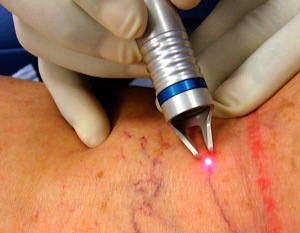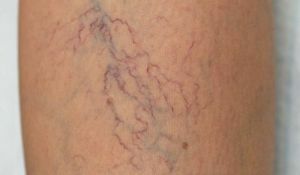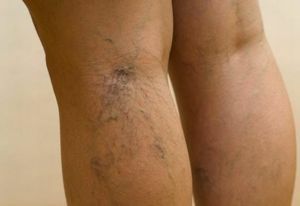 Electrocoagulation is a method of influencing tissues to dissect them( coagulation) during the evaporation of moisture when applying a direct current, is used to treat blood vessels, hemorrhoids, moles, warts and papillomas.
Electrocoagulation is a method of influencing tissues to dissect them( coagulation) during the evaporation of moisture when applying a direct current, is used to treat blood vessels, hemorrhoids, moles, warts and papillomas.
The procedure is carried out using special electrodes connected to the power source.
The number of electrodes used in medical practice is as follows:
- monopolar ( use of one electrode);
- bipolar ( use of two electrodes).
Further there is a division into:
- monoactive ( application of two electrodes, one of which - with a larger area passive, and with a smaller area - active);
- bi-active ( both electrodes have the same area and are equally active).
The use of the apparatus and the bipolar bi-active technique provides an impact only on the location of their application at a shallow depth.
Thus, with the application of various electrocoagulation procedures, a different effect is achieved due to the different depth and extent of the action of high-frequency currents.
Contents
- Indications and contraindications for prescribing
- How is the process
- Vascular treatment
- Treatment of hemorrhoids
- Preparation and procedure
- Rehabilitation period
- From the patients' reviews
- Price issue
Indications and contraindications for prescription
Electrocoagulation has become quite widespread in medicine and cosmetology. Through this method, a person can get rid of such problems as:
- birthmarks;

- of the papilloma;
- warts;
- occurs cauterization in erosion of the cervix;
- vascular setochki on the legs and face;
- varicose dilatation;
- hemorrhoids.
Procedure can not be prescribed if:
- there are blood diseases( especially associated with poor coagulation);
- there is an intolerance of the body electroprocedures and anesthetics;
- herpes is in active form;
- has an acute form of somatic diseases;
- have a place to be malignant neoplasms.
How the process of
is going on For a long time, the classical method of combating venous expansion of veins was surgical intervention by tying the mouth of the subcutaneous large vein and further removing it on the thigh and excising the dilated vessels on the shin.
In addition to soreness, this procedure from the cosmetic point of view significantly spoils the type of the operated leg.
An alternative to the procedure is electrocoagulation. When treating vessels on problem areas, they act by high-frequency current, installing a device with a thin electrode on the required area. The drawback of this method of treatment is soreness and the possibility of infection.
Also, on the treated area after such a peculiar cauterization, pigmentation of the tissues, the appearance of scars can occur.
Vessel treatment
 Electrocoagulation of capillaries is performed by numerous punctures in the place of problem vessels. The device is a thinnest needle-electrode, which directly affects the vessel with a high-frequency current. For carrying out such an event, anesthesia of the puncture site should be performed first, since one of the disadvantages of this method of treatment is soreness.
Electrocoagulation of capillaries is performed by numerous punctures in the place of problem vessels. The device is a thinnest needle-electrode, which directly affects the vessel with a high-frequency current. For carrying out such an event, anesthesia of the puncture site should be performed first, since one of the disadvantages of this method of treatment is soreness.
When such a needle is inserted from the current, the electrode is heated, and then the blood and surrounding tissues are heated. The doctor during the procedure should be maximally focused on the implementation, since affecting a larger area can lead to the heating of neighboring areas, and, consequently, the occurrence of burns and scars.
After the blood and tissues of the affected area have been heated, their coagulation leads to sclerosing( gluing the walls of the vessels).After a while, the vessel, impenetrable for blood flow, resolves, and the vascular asterisk disappears.
Electrocoagulation is most successfully treated with vascular sprouts located on the legs and face. The diameter of the vessels should not be less than 0.3 millimeters. The whole procedure lasts about 20 minutes and can be repeated from two to five sessions with an interval of 7 days.
Treatment of hemorrhoids
In proctology electrocoagulation is often used to get rid of hemorrhoids. For this, a tweezers adaptation with electrodes at the end is used.
It is these electrodes that cover the base of the hemorrhoids and the electric current is passed. Thus, coagulation of the vessel is performed, which nourishes the neoplasm, the knot of the node dries up and the node itself disappears. The time of exposure and manipulation is about 2 seconds.
This impact is not without consequences. They are manifested in 10% of operations: bleeding patterns, pain, formation of anal fissures.
Preparation and procedure of
Electrocoagulation does not require any special preparation. It will be necessary only before the event itself.
So, to remove the vascular network, you need to treat the site with a special ointment or gel to get the effect of anesthesia. If  is an operation with varicose dilatation, then before using the device on the tissues, the cooled solution of sodium chloride should be applied around the treated area. Thus, protecting fabrics from overheating.
is an operation with varicose dilatation, then before using the device on the tissues, the cooled solution of sodium chloride should be applied around the treated area. Thus, protecting fabrics from overheating.
The patient is lying down. The doctor, if necessary, makes anesthesia of the treated area.
Then the electrode is installed vertically to the problem vessels and the average or maximum intensity of the electric current exposure is set( depending on the depth of the vessel).
The impact occurs instantaneously, starting from the peripheral areas through an interval of about 2 millimeters.
Bleeding during this treatment is not due to the thermal effect on the vessels, leading to protein folding and the formation of microthrombi.
The resulting field of the procedure must be treated with a solution of potassium permanganate( 5%).In a week the crust itself will fall off. In its place will be visible pink skin, which gradually acquires a normal color.
Rehabilitation period
 After the procedure, it is important not to fall under direct sunlight. If there is no possibility to abandon the campaign, it is mandatory to use sunscreen.
After the procedure, it is important not to fall under direct sunlight. If there is no possibility to abandon the campaign, it is mandatory to use sunscreen.
Until the moment when the crust is dropped, it is strictly forbidden to apply heat to the area: baths, baths, saunas, leave until complete recovery. If the intervention concerned varicose veins, then some time to maintain the vessels need to wear an elastic bandage or special linen.
Of the patients' reviews
The electrocoagulation method is popular among patients, which is confirmed by numerous reviews.
Two weeks ago, I was electrocoagulated on my leg. In principle, while I'm happy with the result: small vessels are not visible at all. Time will show how time will go.
Inna, 32 years old
On such an intimate issue as hemorrhoids did not particularly want to advertise, but I want to share the results of the procedure. Yes, it was an unpleasant sensation, but quite tolerable. It's been two months now, and the problem did not bother me anymore.
Vladislav, 40 years
Question of price
The price of electrocoagulation will vary significantly depending on the location of the clinic. On average, the procedure depending on  on complexity will cost from 700 to 10,000 rubles.
on complexity will cost from 700 to 10,000 rubles.
Electrocoagulation is a time-tested method. It is applied on an equal basis with others, has a fairly good effect: the formation of hematomas is much less than in surgical intervention( with varicose veins), less visible postoperative scars( with proper care and rehabilitation they can get rid of).
Widely used in medicine( phlebology, proctology, gynecology), and in cosmetology.
